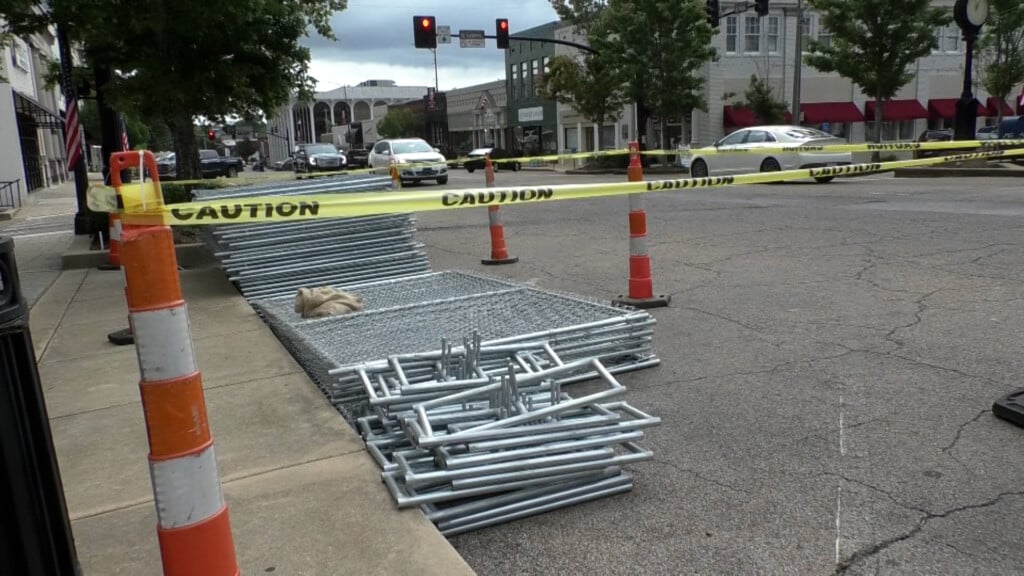Some migrant kids detained for months in jail-like “secure” facilities
The U.S. government is required by law to pursue “prompt and continuous efforts” to unify unaccompanied migrant children with family. In practice, those efforts vary widely at roughly 170 facilities across the country, an analysis of government data being shared with members of Congress Monday has found.
Children at some standard facilities may be released to family in as little as a month. At others, it takes more than three months.
Some children end up in “secure” facilities, more like the juvenile detention where U.S. teens accused of serious crimes are held. The children in these secure facilities are held on average more than six months.
Trending News
The findings are part of a Congressional briefing authored by attorneys with the National Center for Youth Law. They worked with researchers from Stanford University to analyze data received as part of their oversight of the Flores Agreement, which governs the care of migrant children in U.S. custody..
The briefing, obtained by CBS News prior to its release, provides an unprecedented look at the timeline and quality of care for unaccompanied migrant children in U.S. government custody.
It also includes quotes from children who wrote testimonials about their time in secure facilities.
“I sleep in a locked jail cell. The beds are thin mattresses on top of a block of cement and we don’t get pillows. I have a make-shift pillow that I make out of my sweaters or other clothes,” one child in a secure facility wrote, according to the report. “The guards also push us, pepper spray us, and place the handcuffs excessively tight – to the point that wrist injuries frequently occur.”
Neha Desai, one of the authors of the report, said she’s particularly concerned for the children who end up in “secure” facilities.
“Based on our experience, it is the most vulnerable children – those with the most extensive trauma histories –that end up in restrictive placements,” said Desai, who is Director of Immigration at the National Center for Youth Law. “Given everything we know about the grave harms associated with prolonged detention, we find the data around the average length of detention for children in restrictive facilities to be profoundly concerning.”
There were about 4,000 migrant children in U.S. government custody in November, according to the Office of Refugee Resettlement, the federal division responsible for the care of migrant children. The vast majority were placed in “non-secure” facilities, environments that are less strict than their “secure” counterparts. Staff at each facility are tasked with seeking out and vetting sponsors — typically a child’s family – who can assume responsibility for the child outside of detention
ORR did not immediately respond to a request for comment, but in an April interview with CBS News, ORR Director Jonathan Hayes said the agency wants to thoroughly vet sponsors, and pointed to a 2014 incident in which several boys were released to human traffickers posing as relatives.
“We don’t ever want another situation like that,” Hayes said. “The safety of these children is what we prioritize, what drives us.”
ORR data reflects how long children who have been released had stayed in custody. The agency has declined repeated requests from CBS News to provide average lengths of custody for those who have not yet been released.
Across the system, the average length of custody was 57 days for children released as of the end of September.
The facility with the longest was KidsPeace in Bethlehem, Pennsylvania, where children spent an average of 96 days. KidsPeace did not immediately respond to questions sent by CBS News.
Children in “secure” facilities remain in custody for significantly longer: 198 days, or more than six months. Children are “stepped-up” to secure settings in some cases because of formal charges filed in the juvenile justice system, but in many other cases as a result of allegations by staff at non-secure sites.
Children are not given the opportunity to contest the allegations before being placed in the jail-like settings —intended for those at risk of harming themselves or others— meaning even unfounded or arbitrary allegations can lead to secure incarceration, the study said.
The briefing’s authors write that children are often “stepped up” not because of violent behavior, but because of the government’s failure to tend to the mental health needs of children who have suffered trauma before, during and after their journeys to the U.S. They say that because many non-secure facilities lack quality mental health resources, children in need are often transferred to secure facilities.
“These step-ups risk further damaging children’s mental health, as restrictive institutional environments increase the trauma of detention. Children are also more likely to be placed on psychotropic medications in these more restrictive facilities,” the authors write. They also note that prolonged institutionalization and separation from families has been proven to be harmful to children’s mental health.
Desai noted that across the country, the total time in custody has gone down since a peak it reached after the “zero tolerance” policy led to children being separated from their parents. However, she said that decline hasn’t affected every child.
“Clearly there is work that remains to be done in terms of ensuring that all children in custody benefit from this downward trend – not merely those that are lucky enough to end up in facilities where kids are being expeditiously released.”





Leave a Reply